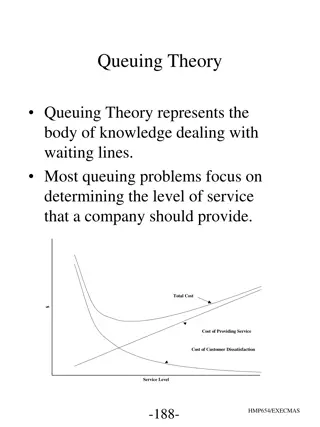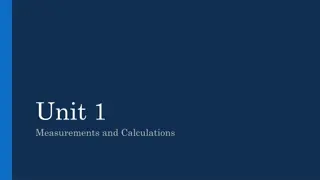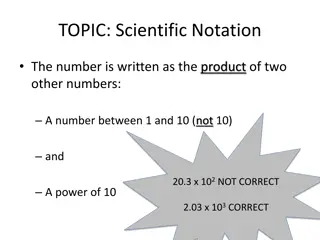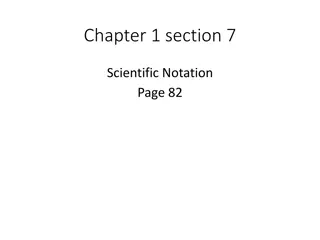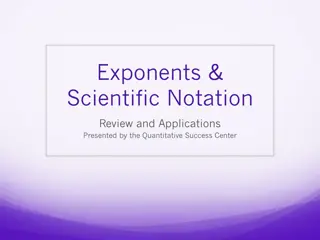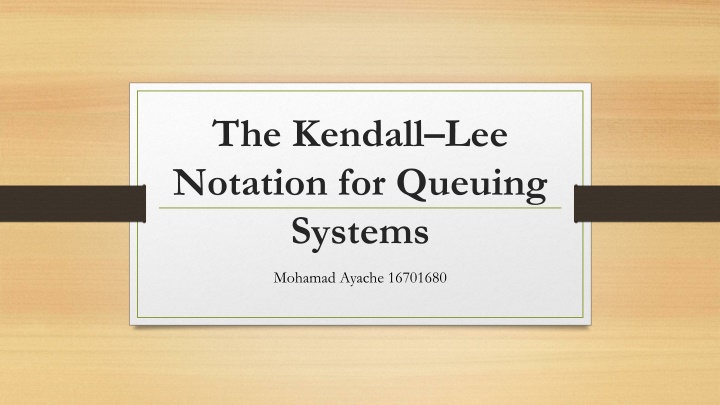
Kendall Lee Notation for Queuing Systems
Learn about the Kendall Lee Notation, a system to describe queuing systems based on six characteristics like arrival, service, servers, discipline, customers, and population. Explore the different components of queuing systems such as arrival processes, service times, number of servers, queue disciplines, maximum allowable customers, and population size.
Download Presentation

Please find below an Image/Link to download the presentation.
The content on the website is provided AS IS for your information and personal use only. It may not be sold, licensed, or shared on other websites without obtaining consent from the author. If you encounter any issues during the download, it is possible that the publisher has removed the file from their server.
You are allowed to download the files provided on this website for personal or commercial use, subject to the condition that they are used lawfully. All files are the property of their respective owners.
The content on the website is provided AS IS for your information and personal use only. It may not be sold, licensed, or shared on other websites without obtaining consent from the author.
E N D
Presentation Transcript
The KendallLee Notation for Queuing Systems Mohamad Ayache 16701680
The notation is used to describe a queuing system in which all arrivals wait in a single line until one of s identical parallel servers is free. Then the first customer in line enters service, and so on. (Assume for FCFS)
To describe such a queuing system, Kendall (1951) devised the following notation. Each queuing system is described by six characteristics: 1/2/3/4/5/6 Arrival/Service/Servers/Discipline/Customers/Population
Arrival process M=Interarrival times are independent, identically distributed (iid) random variables having an exponential distribution. D=Interarrival times are iid and deterministic. Ek=Interarrival times are iid Erlangs with shape parameter k. GI=Interarrival times are iid and governed by some general distribution. Arrival/Service/Servers/Discipline/Customers/Population
Service time M=Service times are iid and exponentially distributed. D=Service times are iid and deterministic. Ek =Service times are iid Erlangs with shape parameter k. G=Service times are iid and follow some general distribution. Arrival/Service/Servers/Discipline/Customers/Population
Number of parallel servers Arrival/Service/Servers/Discipline/Customers/Population
Queue discipline FCFS=First come, first served LCFS=Last come, first served SIRO=Service in random order GD=General queue discipline Arrival/Service/Servers/Discipline/Customers/Population
Maximum allowable number of customers in the system Arrival/Service/Servers/Discipline/Customers/Population
Size of the population from which customers are drawn Arrival/Service/Servers/Discipline/Customers/Population
Company A has 1000 employees and 50% of them are workers. A queue system serves only workers. The arrival process is exponential. Service process have erlang distribution with shape parameter 3. First in first out. 5 servers are available. Arrival/Service/Servers/Discipline/Customers/Population M/E3/5/FCFS/500/1000
Health clinic M/E2/8/FCFS/10/ 8 doctors, exponential interarrival times, two-phase Erlang service times, an FCFS queue discipline, and a total capacity of 10 patients.
M/M/1/GD// Can be written as M/M/1
Thank you Feel free to ask any questions related to the subject

